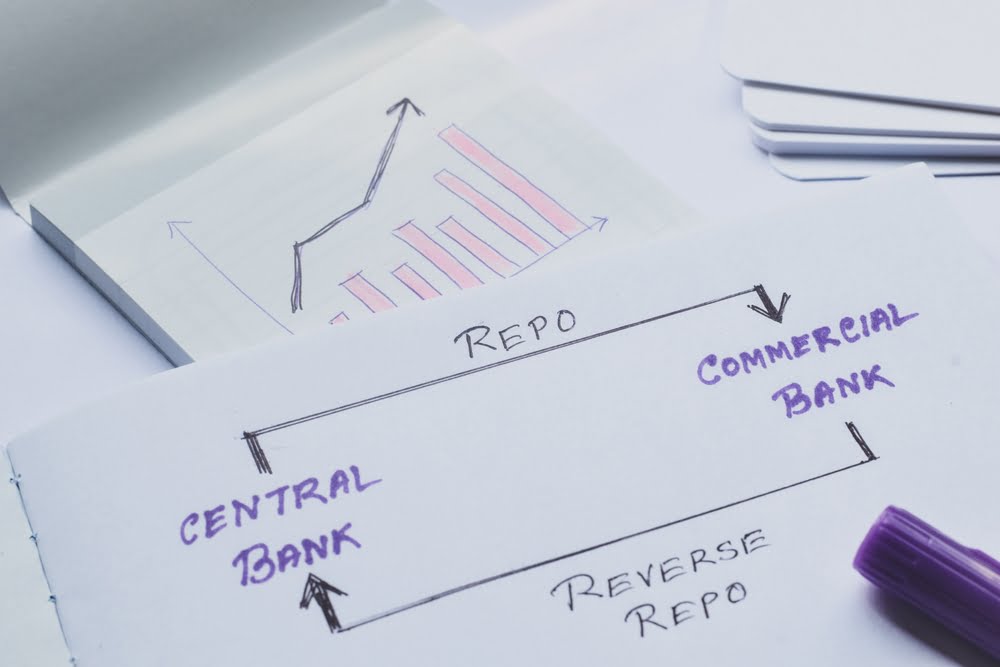Table of Contents
ToggleAbstract
This essay explores the concept of a Distributed Ledger Repo-Platform by delving into the basics of the repo business, how it intertwines with distributed ledger technology, and the use cases behind it. We will analyze the main actors driving these use cases, the advantages of distributed repo platforms compared to traditional ones, and potential future use cases that can be realized with this technology.
Introduction
The repo (repurchase agreement) business is a critical component of the global financial market, facilitating liquidity and funding for financial institutions. This essay will provide an overview of the repo business, explain how distributed ledger technology (DLT) can be utilized in this domain, and discuss the advantages of implementing such a system. We will examine the main actors promoting this technology and explore potential future use cases.
Basics of Repo Business
Repo transactions are essentially short-term loans between two parties, typically involving the sale and future repurchase of securities. One party, the repo seller, agrees to sell securities to the other party, the repo buyer, with the promise to buy them back at a specified date and price. The difference in the sale and repurchase price represents the interest earned by the repo buyer, and the securities serve as collateral.
Repo agreements are crucial for the functioning of financial markets, providing liquidity, reducing risk, and assisting in the management of interest rate fluctuations. They play a significant role in supporting the smooth operation of central banks, primary dealers, and other market participants.
Distributed Ledger Technology and Repo Business
Distributed ledger technology (DLT) refers to a decentralized digital record-keeping system where transactions are recorded, validated, and stored across a network of nodes. The most well-known example of DLT is blockchain, which underlies cryptocurrencies like Bitcoin and Ethereum.
DLT can be applied to the repo business in several ways, including automating processes, enhancing security, and increasing efficiency. By utilizing DLT, repo transactions can be executed without intermediaries, reducing counterparty risk, and enhancing transparency. Additionally, smart contracts – self-executing contracts with the terms of the agreement directly written into code – can be employed to automate repo transactions, minimizing errors and disputes.
Use Cases of Distributed Ledger Repo Platforms
a. Collateral Management: DLT can streamline collateral management by maintaining real-time records of collateral positions, valuations, and ownership changes. This can lead to increased transparency and reduced operational risk.
b. Trade Matching and Confirmation: DLT can facilitate automatic trade matching and confirmation, reducing the time and resources required for manual reconciliation and minimizing discrepancies between counterparties.
c. Settlement and Delivery: By automating settlement and delivery processes, DLT can eliminate inefficiencies, reduce counterparty risk, and shorten settlement cycles.
d. Regulatory Reporting: DLT can provide regulators with real-time access to transaction data, simplifying reporting requirements and enhancing regulatory oversight.
Main Actors Driving Distributed Ledger Repo Platforms
Prominent financial institutions, technology firms, and consortia are driving the development and adoption of distributed ledger repo platforms. Examples include:
a. Broadridge Financial Solutions: This global fintech company has been working on a blockchain-based solution for the repo market, aiming to improve the efficiency of trade processing and reduce risk.
b. JP Morgan: The investment bank has developed a blockchain-based repo platform called Quorum, which enables instantaneous settlement and increased transparency.
c. DTCC (Depository Trust & Clearing Corporation): As the primary clearinghouse for US securities, DTCC has been exploring DLT applications in the repo market, focusing on enhancing trade processing and reducing operational risk.
Advantages of Distributed Ledger Repo Platforms
Compared to traditional repo platforms, distributed ledger repo platforms offer several advantages:
a. Enhanced Security: DLT provides a tamper-proof and transparent record of transactions, increasing trust among market participants and reducing the risk of fraud.
b. Increased Efficiency: By automating processes and eliminating intermediaries, DLT can reduce processing times and costs associated with repo transactions.
c. Improved Transparency: The real-time, shared nature of distributed ledgers enables participants to access accurate and up-to-date information, fostering trust and promoting informed decision-making.
d. Reduced Counterparty Risk: The decentralized nature of DLT minimizes the need for intermediaries, lowering counterparty risk and promoting more direct interactions between market participants.
Future Use Cases for Distributed Ledger Repo Platforms
As the technology matures, additional use cases for distributed ledger repo platforms are likely to emerge:
a. Cross-Border Transactions: DLT could facilitate cross-border repo transactions by providing a unified, secure, and efficient platform for settling trades and managing collateral across jurisdictions.
b. Tokenization of Assets: The tokenization of securities, collateral, and even repo agreements themselves could further streamline the repo market by enabling the seamless transfer of ownership and the automation of processes.
c. Integration with Other Financial Services: Distributed ledger repo platforms could be integrated with other financial services, such as payments, securities lending, and derivatives trading, to create a comprehensive, interconnected financial ecosystem.
Conclusion
Distributed ledger technology has the potential to revolutionize the repo business by enhancing security, transparency, and efficiency. Major financial institutions and technology firms are already driving the development and adoption of distributed ledger repo platforms, with various use cases demonstrating the benefits of this technology. As DLT matures, it is likely to unlock further use cases and enable new efficiencies, transforming the repo market and the broader financial landscape.












